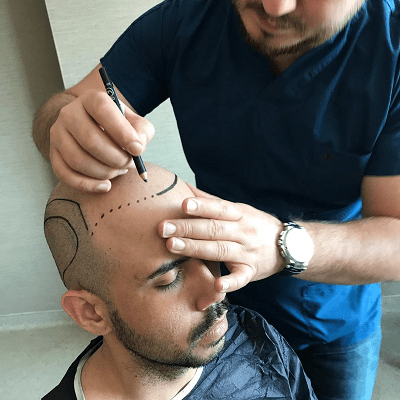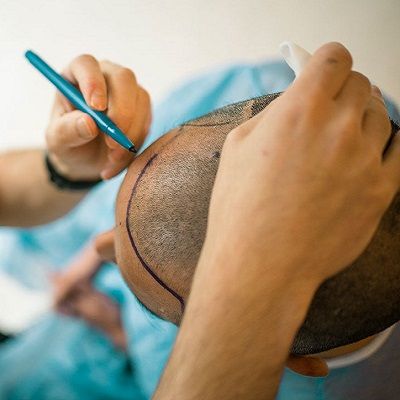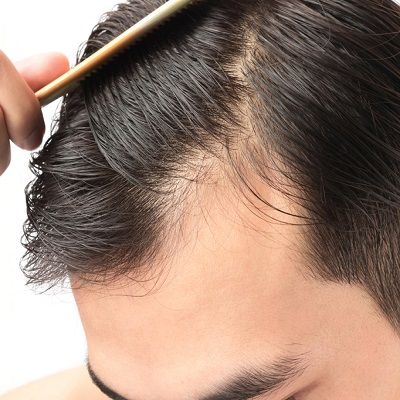
Hair is a filamentous structure that is composed of a protein called keratin. There are three basic phases to hair growth. The anagen phase lasts for several years and determines the maximum length the hair may attain. The hair follicle enters the catagen phase, a transitional stage after the anagen phase, during which growth stops and the follicle decreases. The telogen phase is a resting stage when the hair is completely developed but not actively growing. It is the phase where hair loss mostly occurs. A Hair Transplant is now a common choice for people to decrease their Hair Loss. But the major query they have is Can I Undergo a Second Hair Transplant If Needed?
What is a Hair Transplant?
After an initial hair transplant, a second hair transplant sometimes referred to as a secondary hair transplant or hair transplant revision, is carried out. A second hair transplant’s main goal is to improve the initial procedure’s outcomes in terms of density, coverage, or overall aesthetics.
People may decide to get a second transplant for a variety of reasons. It may be because certain areas on the scalp still seem thin or bald after the original transplant, which didn’t provide enough results. Furthermore, as hair loss frequently progresses, additional regions of hair loss can have emerged since the initial surgery. These additional locations can be covered in more detail by the second transplant. A second hair transplant may also help to improve the hairline and design to better fit the patient’s preferences or to cover any apparent scars from the first procedure.
Procedure:
A Hair Transplant in Dubai is a common practice people are using to get the scalp full of hair. The procedure of a second hair transplant is quite similar to an initial transplant. However, it still has some different considerations than the initial transplant. The doctors get more conscious and careful while performing the second hair transplant.
- A consultation with a skilled hair transplant surgeon kicks off the procedure. The doctor will examine the patient’s present hair condition, analyze the success of the first hair transplant, and go over the patient’s expectations for the second treatment. In order to ascertain whether there is sufficient hair available for transplantation, they will check the donor area, which is the area with healthy hair follicles.
- Before the initiation of the procedure, the doctor asks the patient to follow the pre-procedure guidelines to avoid complications during the procedure.
- He applies the local anesthesia to reduce the discomfort and pain. And to ensure patients remain comfortable during the procedure.
- The doctor will carefully extract the hair follicles from the donor region, which is often the back or sides of the scalp. The surgeon may choose to harvest hair using the FUE (Follicular Unit Extraction) or FUT (Follicular Unit Transplantation) techniques, depending on the patient’s particular requirements and the availability of donor hair.
- He will make tiny incisions in the regions that require more hair covering once the donor’s hair has been removed. He will carefully plan this location to provide a result that is both beautiful and natural-looking.
- After the incision, the doctor will delicately place the healthy hair follicles with the use of delicate devices into the recipient areas. To guarantee a flawless integration of the transplanted hair, the surgeon takes care to match the direction, angle, and density of the surrounding hair.
Aftercare:
For the greatest outcomes after a second hair transplant, specific aftercare guidelines must be followed. The patient must carefully follow the surgeon’s recommendations for scalp cleanliness and wound care. Patients can maximize the success of their second hair transplant and get the desired result by carefully adhering to these aftercare instructions.
- To avoid displacing grafts, refrain from rubbing or scratching the transplanted region.
- Follow the directions on any given medications, such as antibiotics or pain relievers.
- For a few weeks, refrain from hard lifting and rigorous activities to reduce stress on the scalp.
- For the first few nights, sleep with your head raised to reduce swelling.
- When outdoors, avoid exposing the scalp to direct sunlight and use a cap or sunscreen.
- For the duration of the surgery, avoid swimming or submerging your head in water.
- To keep both the transplanted and natural hair healthy, gently wash and take care of it as directed.
- Attend follow-up consultations with the surgeon to track the growth of new hair and treat any issues.
Benefits of Hair Transplant:
For people who want to further increase their hair density and coverage, getting a second hair transplant can be a safe and effective alternative. However, a skilled and experienced hair transplant surgeon must carefully assess a number of variables that are important to its success.
- Increases hair coverage and density.
- Correction of any shortcomings or poor outcomes from the prior transplant.
- Addresses persistent hair loss or other areas of thinning.
- Enhance the scalp’s and Hairline’s overall natural look.
- Improves one’s sense of worth and self-assurance.
- Utilizes cutting-edge methods for a quicker recovery and less scarring.
- Expands style and care choices for hair.
- After the initial transplant, it deals with hair loss brought on by aging or other circumstances.
Book A Consultation!
Our clinic in Dubai offers the procedure of a second hair transplant. We have well-qualified doctors who are competent in their work. They will make sure to clear your concerns that relate to Can I Undergo a Second Hair Transplant If Needed. So answer the consultation form to get your appointment.











